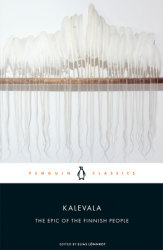Elias Lonnrot
Elias Lönnrot was a Finnish country doctor born in 1802. During twenty years spent working in a remote part of eastern Finland, Lönnrot collected fragments of folk tales and poetry which he believed formed a continuous epic. He undertook eleven field trips on a quest to gather as much material as he could, partly funded by the Finnish Literary Society, of which he was a founding member. The result was the Kalevala, first published in 1835. Lönnrot continued to collect material, eventually bringing out the version we know today in 1849. It consists of 22,795 verses, divided into fifty songs. Lönnrot most likely merged similar variants and stitched fragments together with his own words.
Lönnrot became a professor of Finnish language and literature at the University of Helsinki in 1853. His work paved the way for the development of modern Finnish literature and promoted Finnish as the national language over Swedish. From 1866 he worked on the fourteen-year-long task of compiling the first Finnish–Swedish dictionary which contained over 200,000 entries. Many of the translations were coined by Lönnrot himself. He died in 1884.
Horatio Clare is the bestselling author of numerous books including the memoirs Running for the Hills and Truant and the travel books A Single Swallow, Down to the Sea in Ships, Orison for a Curlew, Icebreaker and The Light in the Dark. His books for children include Aubrey and the Terrible Yoot and Aubrey and the Terrible Ladybirds. Horatio’s essays and reviews appear on BBC radio and in the Financial Times, the Observer and the Spectator, among other publications. He lives with his family in West Yorkshire.











